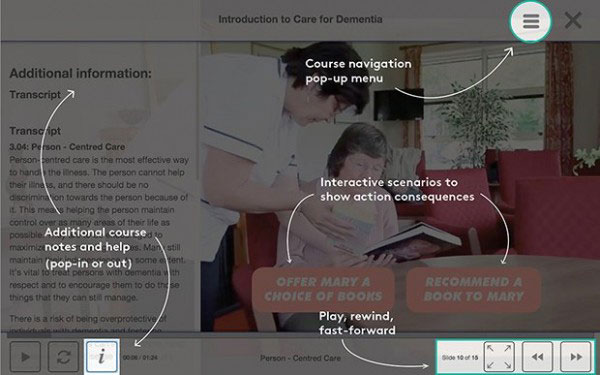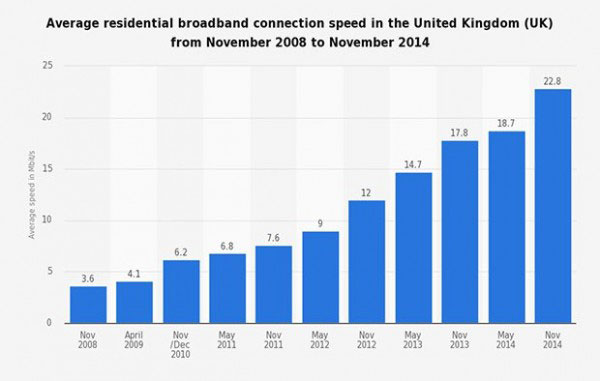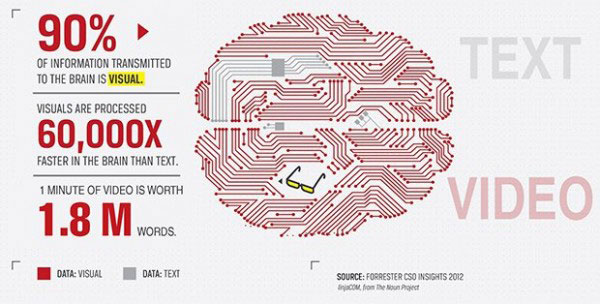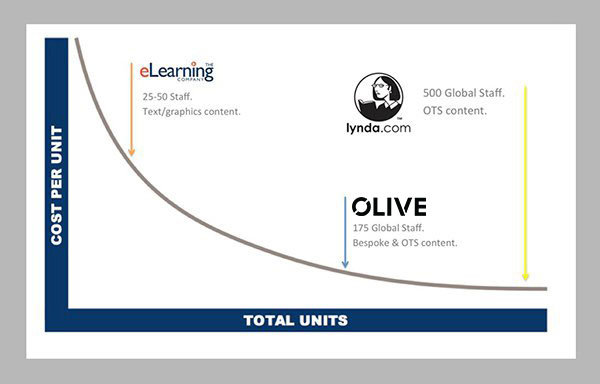The phenomenal growth of online video learning has opened up a world of potential to L&D professionals. Many businesses are now transforming their content, while others raise concerns around its implementation. Video are not the panacea, but this article looks to bust some of the myths associated with video in learning.
Over the last few years online video has taken the world by storm. If you want to learn how to tie-a-tie or create a spreadsheet you’ll probably try YouTube first, and increasingly you’ll turn to your mobile. There are now more than 135 million ‘how-to’ videos on YouTube and 91% of smartphone owners use their device when completing a task. It’s the world’s second biggest search-engine; only Google is bigger.
So how are we responding to this revolution in video learning? Many people are embracing it, and the growth of platforms like Udemy and Lynda.com seems to illustrate this point. While others in the L&D community question its use, citing issues relating to the technology, pedagogy and the apparent costs involved. Having read a number of articles raising questions around video-led learning, and speaking with businesses who are considering using it more, I thought it was time we tackled some of the myths.
Myth 1. It’s just passive learning
Video-based learning is passive if we just hit the play-button and sit back like we did with VHS tapes in the past. But active learning now happens through a variety of content styles including 2D/3D animation, virtual environments (e.g. Oculus Rift or Google Cardboard) or interactive video. By asking the learner to engage via knowledge checks, drag and drop tests, quizzes or scenario-based video learning (showing consequences of a certain action) it is no longer just passive learning.

Interactive video learning (Graphic: Olive Group)
The length of the video-led content is also important. Attention spans today have shrunk from 12 seconds to just 8 seconds, a goldfish has an attention span of 9 seconds! Learners are moving from a culture of deep attention (ability to concentrate on one object or information stream for long periods of time, ignoring outside stimulation) to hyper attention (switch focus between multiple information streams, a preference for high stimulation and lower tolerance for boredom). Today, the majority of millennials now say they prefer to learn via video instead of text. This is now the age for ‘bite sized’ video learning. These are shorter modules: typically 10 mins in length made up of short, video learning snippets (1-3 mins max). These videos come with interactive elements which allow learners to engage and measure performance the whole way through the process to help increase learner retention rates.
Myth 2. It takes too much bandwidth
Some people will argue that even if you want to use video content it can’t be done technically because of bandwidth or internet connection issues. In short, and without getting too technical, the average residential broadband connection speed in the UK is now 28 MPBS for example, and most businesses will have speeds and bandwidth that are far higher. 99.9% of population have broadband speeds of more than 8MBPS. 720P HD Videos typically requires a speed of around 4MBPS to stream high-res videos.

UK broadband speeds 2008-2014. Source: Ofcom (Statista)
“A-ha! But what about video learning on mobile?!? You told us 91% of smartphone users look to their phone to complete a task.” Ok, so here I’ll be a little more technical. Platforms like YouTube and Netflix use smart technology like MPEG DASH. Modern multi-device LMS platforms are using the same technology as Netflix to ensure that when the course is played, the player is constantly sensing how much bandwidth the learner has, and will automatically switch to the next best rendition chunk.
We know from experience with hundreds of thousands of learners on our platform from the Caribbean to Southeast Asia that bandwidth is definitely not a problem.
Myth 3. You can’t control the pace
Different people learn at a different pace, sure. But, I’ve read articles that say you can’t control the pace of video-learning. Is that not what the stop, pause or rewind buttons are for?You can go back to look at certain points in the course, and replay a segment until it’s better understood.

Video visuals versus text. Source: Forrester.
In fact, research carried out claims that 90% of information transmitted to the brain is visual and that visuals are processed 60,000 times faster in the brain than text. Plus, a report from Forrester states that one minute of Video is worth 1.8M words. Even if you’re not convinced, there’s no denying that’s quite a few powerpoint-style Elearning slides!
Myth 4. It’s too expensive
The growth and advancement in technology has been so dramatic that today, even a smartphone can produce top quality video. Equipment has become far more accessible and so has the editing software. Short-video editing tools like Vine, Instagram or iMovie are easy to use and they’re all free. You can even step it up a gear with live broadcasting via Periscope available on mobile devices.
But maybe you don’t want to produce the content inhouse. Maybe you have a bit of budget and want to outsource it to professionals. Then surely it’s more expensive than a lot of the ‘powerpoint-online’ content we’re seeing today? With most traditional content developers, the answer they will give you is yes..it is more expensive. But what happens if you have economies of scale for video based content? Lynda.com do it. They are now worth more than $1.5 Billion, have 500 staff and take 3 months to create high-quality “off-the-shelf” video content. “Aha! But I want bespoke content!” I hear you say. Well, there is a new breed of global content providers, similar to our business, who have grown to a significant size that provide businesses with bespoke video-led content for the same cost of production as text/graphics content. Our own business has tripled to 175 staff in just 3-years, providing the economies of scale required to help offer something different.

Economies of scale for video production.
Conclusion
Of course, interactive-video content cannot be used in every workplace environment. However, many of the previous barriers to using it no longer exist today. Technological and economical advances have helped transform the content and how it is taken. The majority of people today are already learning via video on smartphones at home and maybe it’s time for forward-thinking businesses to now consider the new world of multi-device, bite-sized video learning.
This article was 1st published at eLearning Industry, Friday 11 March 2016. http://elearningindustry.com/4-biggest-myths-video-learning
